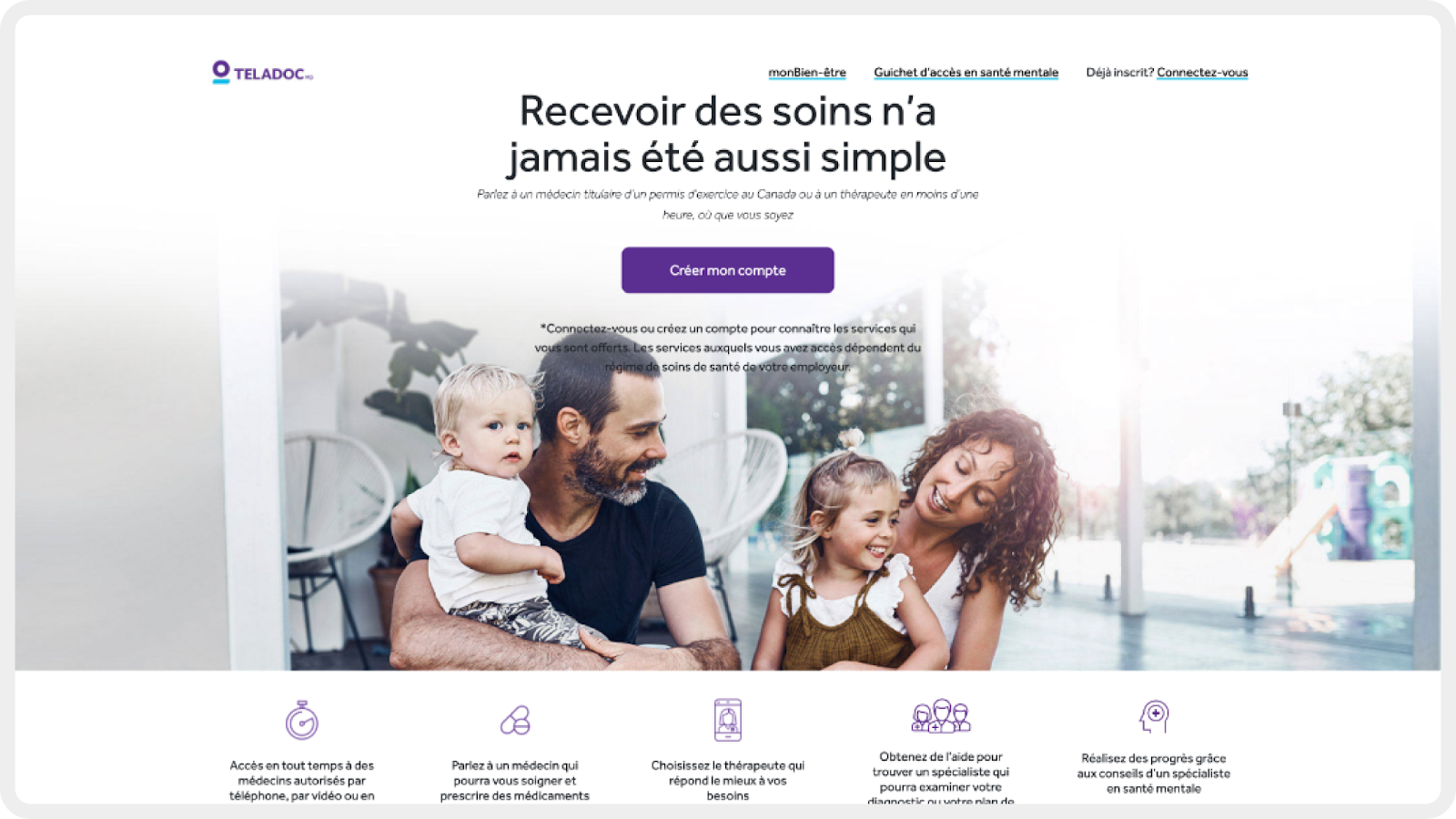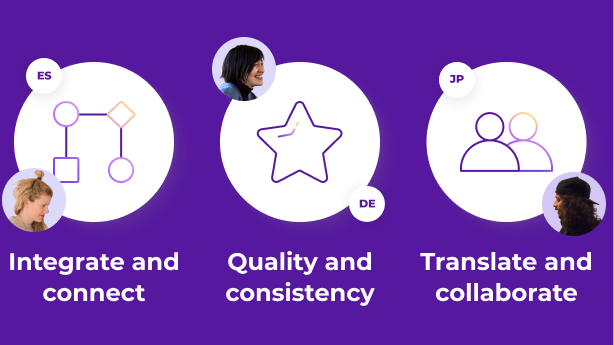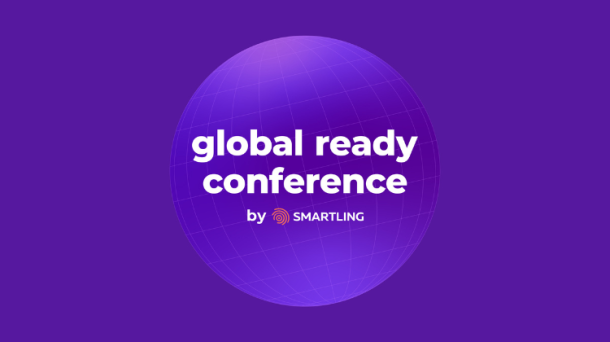In the medical device industry, accurate and compliant translations are not just a best practice—they’re a necessity. The global medical device market will reach a $953.4 billion value by 2027, up from $639.1 billion in 2021.
Because of this, the need for precise, reliable translation services has never been more critical. Inaccurate translations of user manuals, device labels, and other critical healthcare documentation can lead to misuse, patient harm, and even legal liabilities.
This article will provide strategic insights to help you build and maintain consistent, high-quality translation workflows for your medical device content. We'll also offer expert advice on how to choose the right medical translation service provider to ensure that your products meet localization regulations and maintain the highest standards of safety and usability.
What does medical device translation include?
Medical device classifications are based on the device’s intended function and the level of risk it poses to patients. This classification system regulates medical devices and ensures their safety and effectiveness.
These devices include single-use, implantable, and imaging devices, medical equipment, software, in-vitro diagnostics, surgical and laboratory instruments, personal protective equipment, life support machinery, and therapeutic appliances.
Medical device translation involves translating a wide range of documentation and content related to these medical devices, including:
- User interface (UI) and user experience (UX) components: UI and UX translations include the software interfaces, menus, buttons, alerts, and prompts on the medical device itself to ensure a seamless user experience for patients and healthcare professionals in multilingual markets.
- Operator manuals and instructions for use (IFUs): Translating user manuals and IFUs provides clear, accurate guidance on how to properly and safely operate medical devices.
- Regulatory compliance–related documents: These documents include development safety update reports, safety data sheets, medical device directives, and other regulatory documents for compliance in different regions.
- Product packaging and labels: Translating product labels, packaging inserts, and other materials that come with medical devices allows patients and healthcare professionals in different countries and regions to use them safely.
- Marketing and promotional content: Translated marketing materials, like brochures and websites, support global medical device commercialization.
- Clinical trial documentation: For devices that are undergoing clinical trials, it’s crucial to provide translated informed consent forms and other clinical research–related documents.
- Technical specifications: Medical devices’ technical details and specifications must be accessible in other languages to help healthcare providers understand their capabilities and compatibility.
Why reliable medical device translations are critical
Medical devices play a vital role in improving patient care and enhancing diagnostic capabilities worldwide. Accurate translations ensure that healthcare professionals and patients understand how to use medical devices safely and effectively.
Medical devices are complex tools that rely heavily on clear instructions, warnings, and documentation. Even the slightest error in translation can lead to misinterpretation, misuse, and potentially serious consequences for patients.
Inaccurate translations can result in:
- Incorrect device usage: Using medical devices improperly can lead to adverse events, like medication errors, that may harm patients.
- Reduced patient confidence: Patients rely on clear, accurate information to make informed decisions about their care. Imprecise translations can erode trust in the device, hindering patient adherence to treatment and medication and potentially compromising outcomes.
- Noncompliance with regulatory requirements: Medical device manufacturers must comply with local language-specific labeling and documentation requirements to avoid legal issues and penalties. This includes adhering to guidance like the European Medical Devices Regulation and regulations from the U.S. Food and Drug Administration (FDA). Noncompliance may lead to serious consequences, such as device recall and litigation costs.
For example, the FDA issued a warning letter to a Chinese pharmaceutical company, Guangdong Zhanjiang Jimin Pharmaceutical, in 2017 regarding issues with the active ingredient listed on one of its over-the-counter anti-itch products. Investigations revealed that the active ingredient in the product was different from the one declared on the product forms.
The pharmaceutical company claimed that the discrepancy was due to a translation error but still had to recall the affected batches of the product. This incident underscores the importance of accurate medical translations for both patients’ safety and companies’ success.
Check out our detailed article on how to achieve accuracy in life sciences translations.
Medical device translation challenges
You may come across several unique challenges when trying to achieve accurate and compliant medical device translations. Let’s take a look at some of these:
Technically complex medical device documents
Medical device documentation involves highly specialized medical terminology and technical concepts that require a deep knowledge of the medical field to understand. Because of this, relying solely on machine translations can result in inaccuracies. Translators must have subject matter expertise in the relevant medical field and must understand the device’s functions to accurately convey the intended meaning.
An ever-evolving regulatory landscape
Translators must also keep up with existing regulations and upcoming updates that pertain to specific medical devices. For instance, the In Vitro Devices Regulation (IVDR) is a European Union regulation that applies to in vitro diagnostic medical devices. The IVDR significantly increases regulatory oversight and requirements for in vitro diagnostic medical devices compared to the previous framework.
Linguistic and cultural nuances
Medical device translations require sensitivity to the target audience’s linguistic and cultural nuances. This includes understanding local idioms and other nuances related to healthcare and adapting terminology to regional preferences.
The case of Cuban-American Willie Ramirez highlights the consequences of medical translation errors. When the 18-year-old’s family took him unconscious to the hospital, they told staff that he was "intoxicado," or poisoned. However, a staff member mistranslated this as "intoxicated," leading the care team to treat Willie for a drug overdose instead of the cerebral hemorrhage he was actually experiencing.
This delay in proper treatment resulted in Willie becoming a quadriplegic, a tragic outcome that his care team could have avoided with accurate medical translations.
How to achieve consistently accurate medical device translations
Despite the complexities of translating medical terminology, it’s possible to achieve precise and accurate medical device translations using a blend of technology and human expertise.
Here are some strategies that will set you up for success:
Work with professional translation services
Professional translators are invaluable for medical device companies that are looking to expand into new global markets. Certified medical translators with expertise in technical terminology can provide accurate translations of critical regulatory documents, user manuals, and labels to maintain compliance and patient safety.
By leveraging translation memory, translation providers can also deliver high-quality, consistent translations that enable medical device manufacturers to effectively communicate with healthcare professionals and patients worldwide.
Learn more about the benefits of working with professional translators.
Establish a standardized translation workflow
You can also use workflow automation to create a standardized medical device translation process and achieve consistency across all translation projects. To ensure high-quality translations, make internal reviews a part of your translation processes and have team members review translations before finalizing them.
Additionally, you can develop and maintain a centralized glossary of approved medical terms and their translations in each target language. This promotes consistent terminology usage across all translated materials.
Translation management systems (TMSs) enhance this workflow by enabling collaborative reviews and providing translation memory and analytics reporting, ultimately streamlining the translation process and helping translators make sure that translated content accurately conveys the intended information.
Implement a rigorous quality assurance process
Lastly, you should implement robust review and validation processes, including linguistic reviews by native speakers, technical validations by subject matter experts, and regulatory compliance audits, to verify translations’ accuracy, completeness, and adherence to standards.
You can also conduct regular user experience testing and cultural adaptation evaluations to confirm that translated materials are clear, usable, and appropriate from the end user's perspective.
What to look for in medical device translation services
Partnering with an experienced language services provider can significantly accelerate medical device go-to-market timelines, ensure compliance, and improve patient engagement.
When selecting medical device translation services, there are several key factors to consider to ensure high-quality and accurate translations that meet regulatory requirements. Let’s take a look at a few of them:
Technical accuracy and subject matter expertise
Look for a provider with extensive experience in medical device translation. The medical translators it employs should be native-speaking subject matter experts and should have in-depth knowledge of specialized terminology, quality standards, and medical regulations in the target language.
For example, Smartling has extensive experience with the healthcare and life sciences industry and works with a network of native-speaking medical translators to consistently provide high-quality medical device translations.  An example of website translation for a healthcare business (Source)
An example of website translation for a healthcare business (Source)
The ability to handle multilingual localization projects
Consider whether the translation service provider can handle translations in multiple languages, especially if you plan to expand into various international markets. Evaluate its localization capabilities, such as integrations with content management systems and multimedia support, as well.
Efficient project management
Look for a provider that can efficiently manage all your projects and provide clear communication and timely delivery. The provider should also be able to handle complex projects with multiple stakeholders. Smartling, for example, offers a central TMS that helps you seamlessly manage translation projects, assign tasks, use machine learning to improve translations over time, and perform automated quality checks.
 Manage multilingual content at scale with Smartling’s TMS. (Source)
Manage multilingual content at scale with Smartling’s TMS. (Source)
Confidentiality and certifications
You should carefully evaluate the translation provider’s data protection procedures to ensure that it maintains confidentiality. You should also sign an NDA before working with the provider.
Smartling's translation workflow is a secure, enterprise-grade infrastructure that meets the highest standards for data protection, which guarantees that sensitive information will always be strictly confidential.
Additionally, translation solutions need to undergo evaluation and earn certifications for ISO standards, requirements, and guidelines related to localization services. You should verify ahead of time that the translation provider adheres to necessary requirements, such as ISO 13485, ISO 9001, and ISO 17100.
How Smartling provides the highest-quality medical device translations
Smartling is a leading language translation services provider with a deep understanding of the healthcare industry’s specific requirements and challenges. Smartling’s features, such as translation memory, glossary management, and in-context editing, allow organizations to accurately translate, culturally adapt, and ensure regulatory compliance for every piece of content they create.
But that’s not all—Smartling's team of native-speaking expert translators has extensive experience in life sciences and provides the highest-quality translations for a wide range of documents, including clinical trial documentation, informed consent forms, product labels, and patient information leaflets. These translations meet even the most stringent requirements for accuracy, consistency, and clarity.
Make your medical device translation process more efficient with Smartling—book a meeting today.

.jpg)





